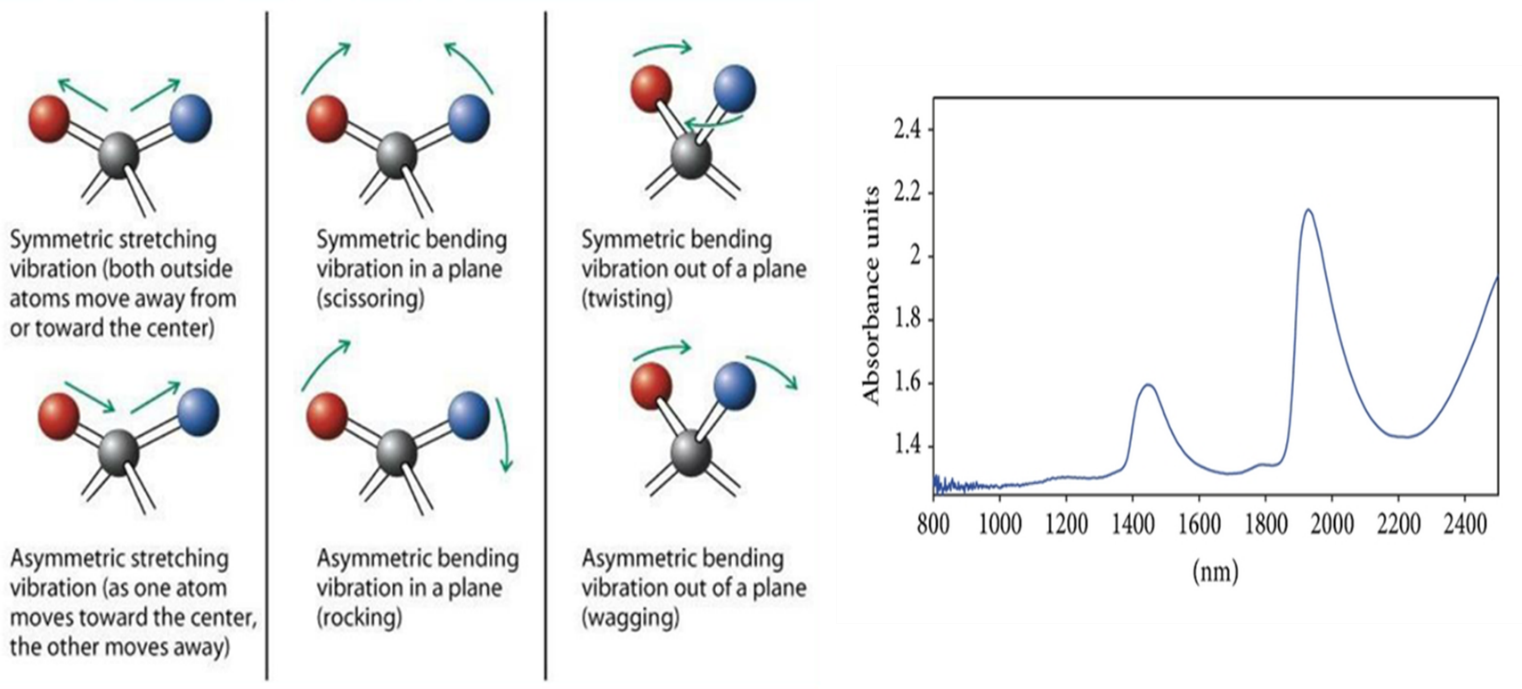What types of chemistry can a Near Infra-Red (NIR) spectrophotometer measure?

The near infra-red spectral region is nothing more than an “overtone mirror” of the mid infra-red region. The near infra-red region contains exactly the same information as the mid infra-red region. So why use the NIR region if there’s no new information there? Overtones are typically much less intense in amplitude than their primary counterparts. This is another way of saying that their extinction coefficients (molar absorptivity) is less. So, from Beer’s Law this means that the path lengths used for NIR spectroscopy can be longer. Typical MIR path lengths are on the order of microns, whereas, the path lengths for NIR spectroscopy are in the range of millimeters. This longer path length can be useful in certain modes of materials characterization.
One interesting fact of NIR spectroscopy is its great sensitivity to small amounts of water, or in general any -OH group. As seen in the spectrum on the right, the -OH group has three bands in the NIR at around 1450 nm, 1900 nm, and 2600 nm. This can pose a problem for any sample with a significant -OH group component.


